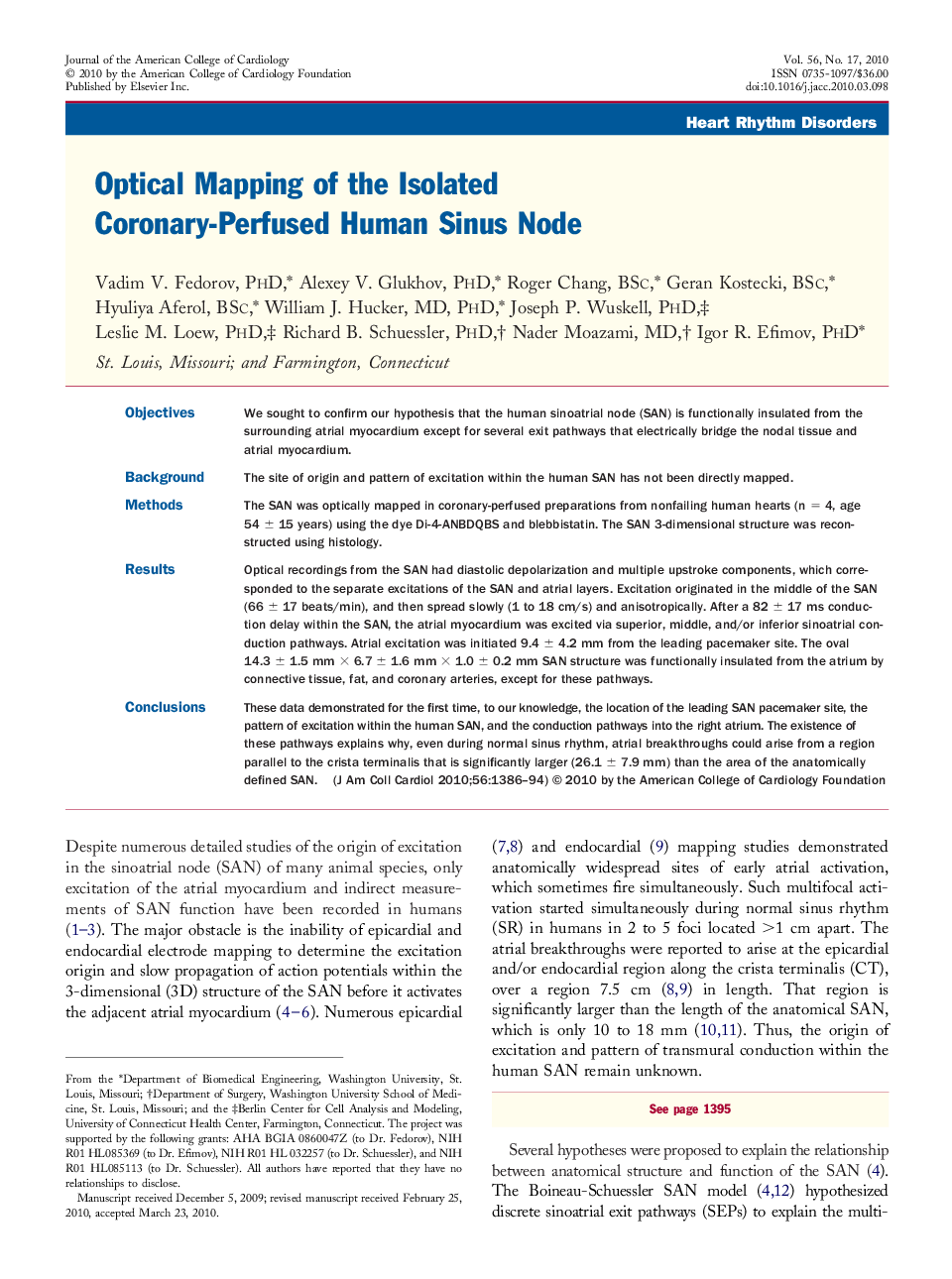| Article ID | Journal | Published Year | Pages | File Type |
|---|---|---|---|---|
| 2949004 | Journal of the American College of Cardiology | 2010 | 9 Pages |
ObjectivesWe sought to confirm our hypothesis that the human sinoatrial node (SAN) is functionally insulated from the surrounding atrial myocardium except for several exit pathways that electrically bridge the nodal tissue and atrial myocardium.BackgroundThe site of origin and pattern of excitation within the human SAN has not been directly mapped.MethodsThe SAN was optically mapped in coronary-perfused preparations from nonfailing human hearts (n = 4, age 54 ± 15 years) using the dye Di-4-ANBDQBS and blebbistatin. The SAN 3-dimensional structure was reconstructed using histology.ResultsOptical recordings from the SAN had diastolic depolarization and multiple upstroke components, which corresponded to the separate excitations of the SAN and atrial layers. Excitation originated in the middle of the SAN (66 ± 17 beats/min), and then spread slowly (1 to 18 cm/s) and anisotropically. After a 82 ± 17 ms conduction delay within the SAN, the atrial myocardium was excited via superior, middle, and/or inferior sinoatrial conduction pathways. Atrial excitation was initiated 9.4 ± 4.2 mm from the leading pacemaker site. The oval 14.3 ± 1.5 mm × 6.7 ± 1.6 mm × 1.0 ± 0.2 mm SAN structure was functionally insulated from the atrium by connective tissue, fat, and coronary arteries, except for these pathways.ConclusionsThese data demonstrated for the first time, to our knowledge, the location of the leading SAN pacemaker site, the pattern of excitation within the human SAN, and the conduction pathways into the right atrium. The existence of these pathways explains why, even during normal sinus rhythm, atrial breakthroughs could arise from a region parallel to the crista terminalis that is significantly larger (26.1 ± 7.9 mm) than the area of the anatomically defined SAN.
